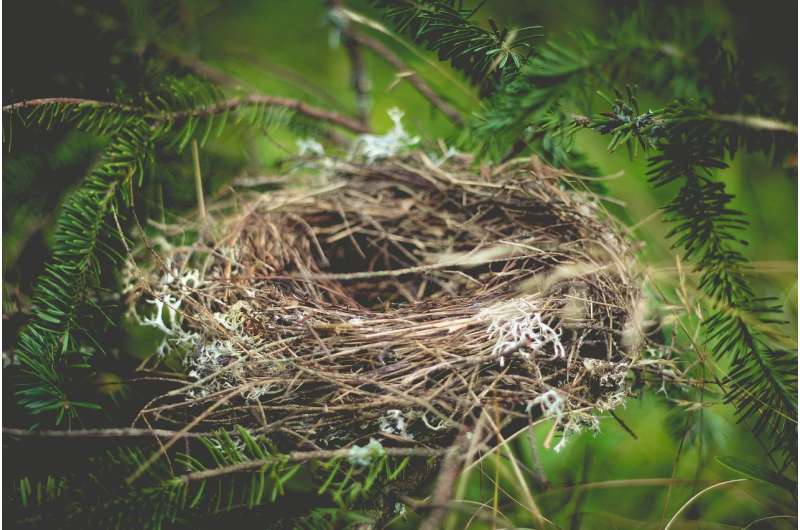New research finds cuckoos change their egg sizes according to their host

An international study into the sizes of oriental cuckoo eggs compared with the egg sizes of their four corresponding hosts in Russia has shown, for the first time, that cuckoos vary the size of their eggs to match those of their hosts, providing evidence of evolutionary adaptation.
The findings, which have been published in the Journal of Zoology, are the result of an international collaborative study where researchers from the University of Hertfordshire in the UK worked with academics from Russia and the Ukraine to study 173 Oriental cuckoo eggs, making this one of the largest studies of this kind.
The Oriental cuckoo parasitizes small warblers, whose nests are hard to reach as they nest high up in the tree canopy, this makes the study of their eggs more difficult. Egg sizes of the Oriental cuckoo (Cuculus optatus) were compared to those of their four corresponding hosts in Russia: the Arctic warbler (Phylloscopus borealis), the common chiffchaff (P. collybita tristis), the yellow-browed warbler (P. inornatus) and Pallas's leaf warbler (P. proregulus). In addition to the field data, researchers studied the Oriental cuckoo and host eggs from Russian oological collections.
A response to host rejection behaviour
The study suggested that a match between cuckoo and host egg breadth could have evolved as a response to host rejection behaviour, as it has been shown that a host is likely to reject an egg larger than the rest of the clutch.
Alla Mashanova, Statistician at the University of Hertfordshire and co-author on the recent Journal of Zoology paper, said: 'We found that the eggs' breadth matched the hosts' well, probably because a cuckoo's egg sticking out above the rest of the clutch is likely to be rejected by the host. The egg length, on the other hand, was much more variable.'
A bigger egg containing more nutrients improves offspring quality, which is particularly important where only the female feeds the offspring, as is the case with Pallas's leaf warbler.
Alla added 'It has been suggested that the egg length is determined by the demand to produce eggs larger than the host's and is affected by the level of parental care. Thus, the longest eggs were produced by cuckoos parasitizing the smallest host with only the female feeding the young. In our view, differences in eggs sizes of the Oriental cuckoo provides evidence of adaptation to brood parasitism on small leaf warbler species.'
The unusual behaviour of the cuckoo
The unusual behaviour of the cuckoo, laying their eggs in other birds' nests and leaving all the care to the host parents, has been the subject of many academic studies and cuckoos are used as an example of evolutionary changes in the UK's GCSE curriculum. However, there are few studies relating to the Oriental cuckoo, which is predominantly an Asian species.
More information: S. G. Meshcheryagina et al. Host species determines egg size in Oriental cuckoo, Journal of Zoology (2018). DOI: 10.1111/jzo.12583
Journal information: Journal of Zoology
Provided by University of Hertfordshire



















